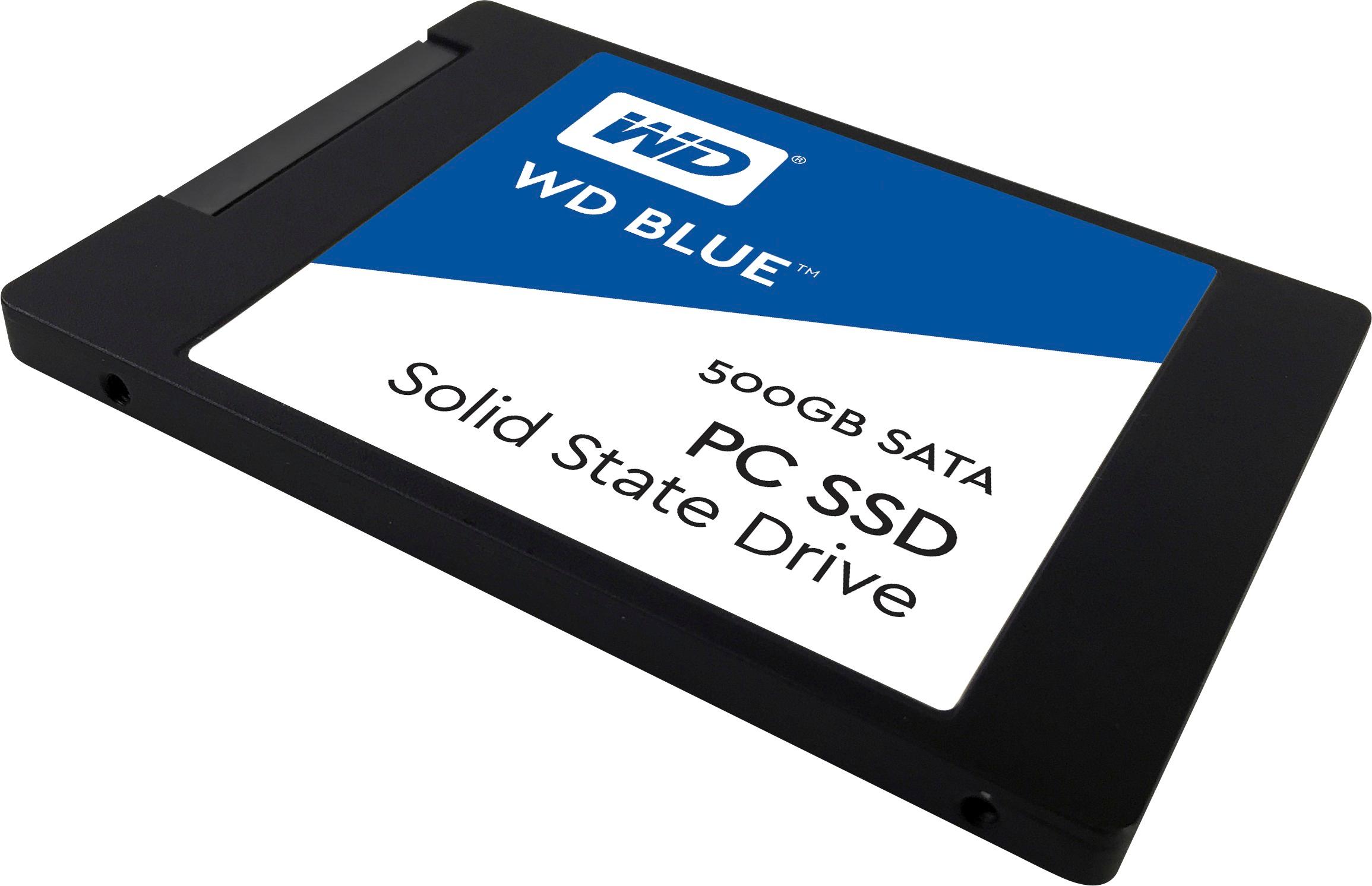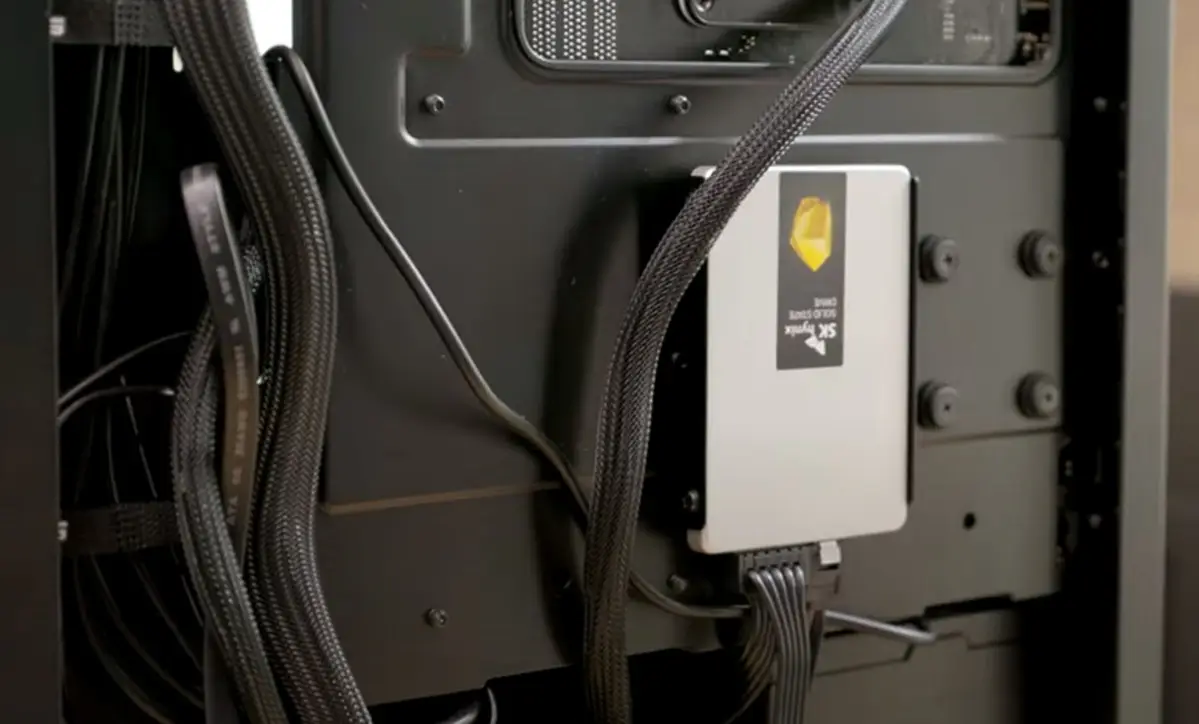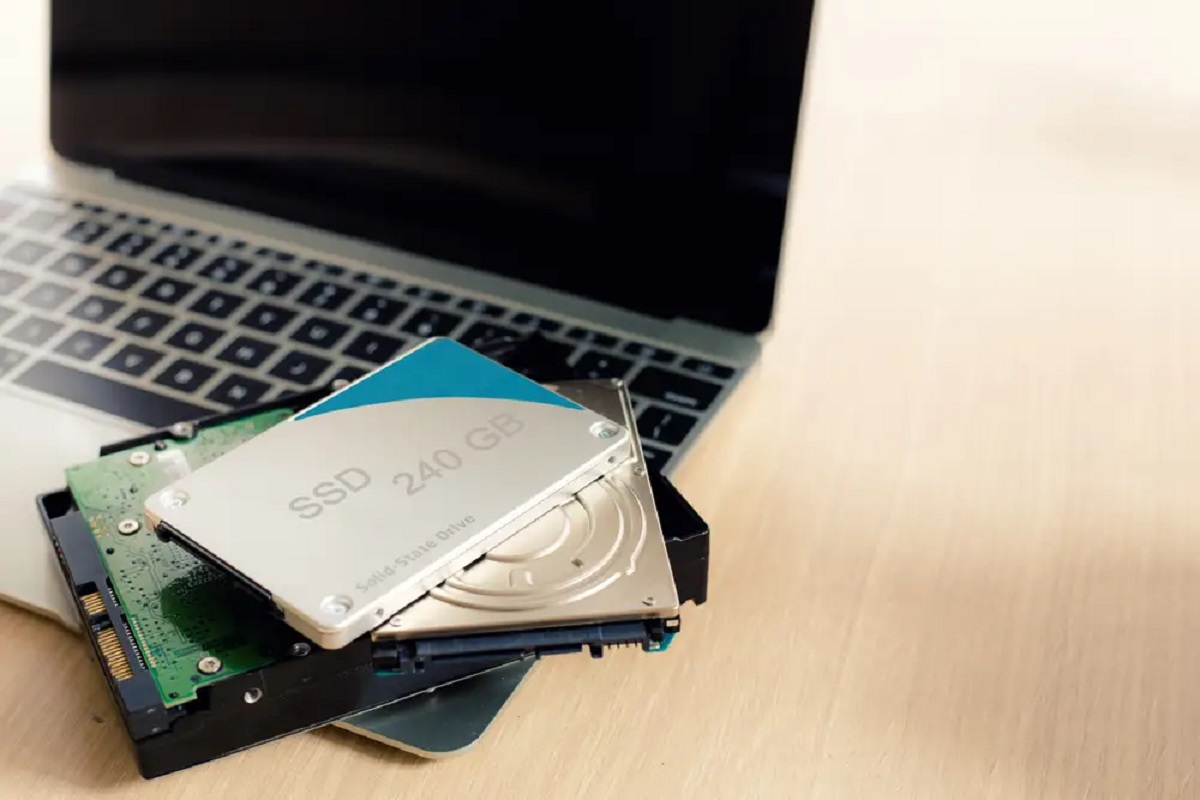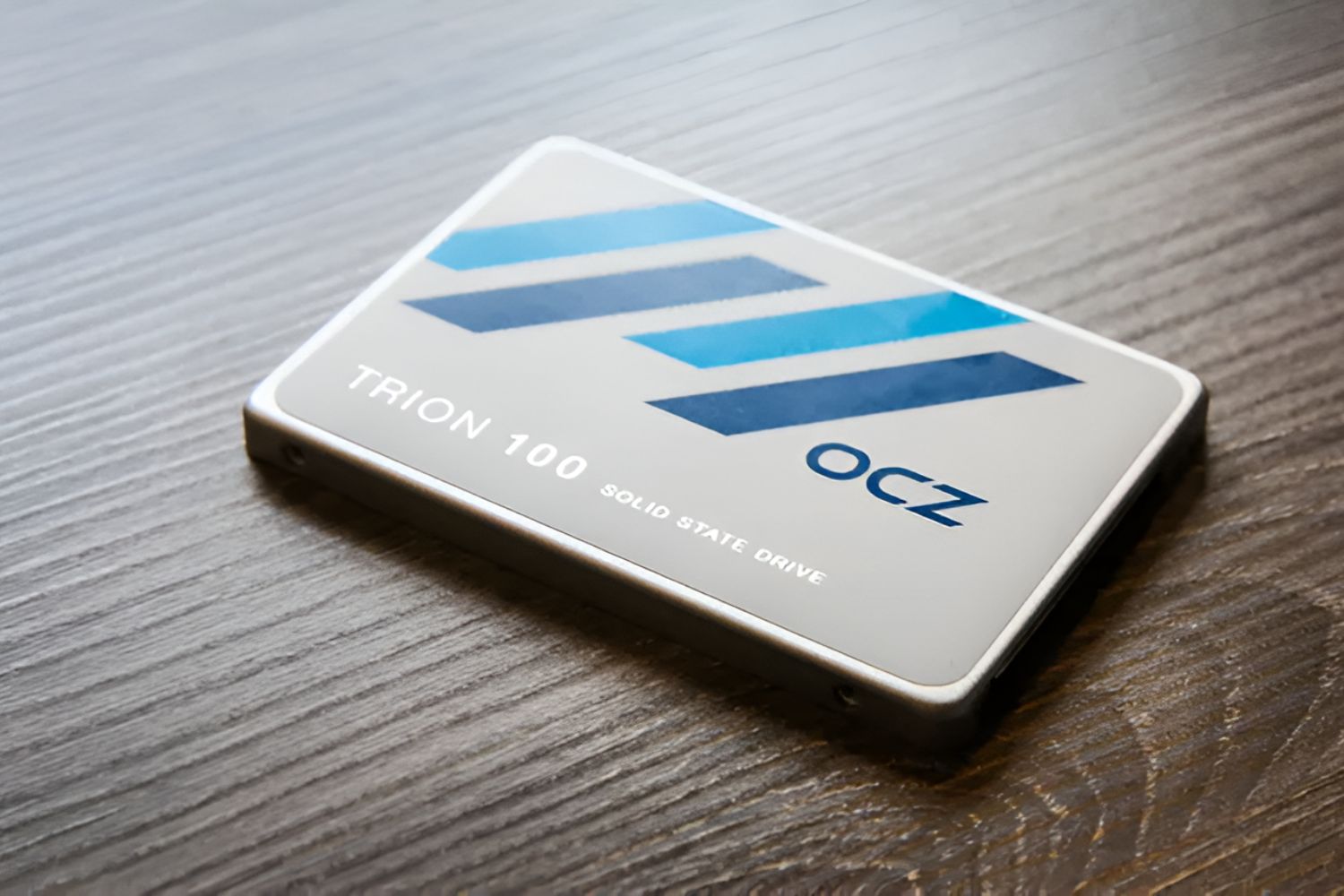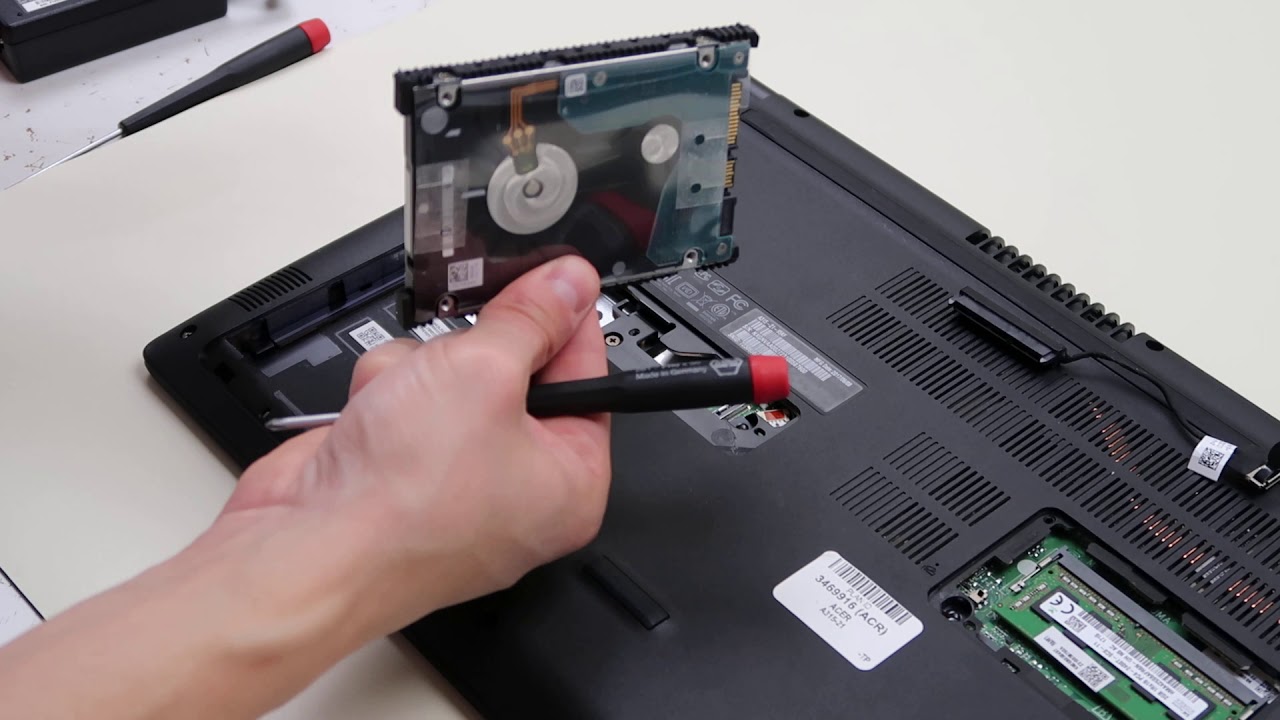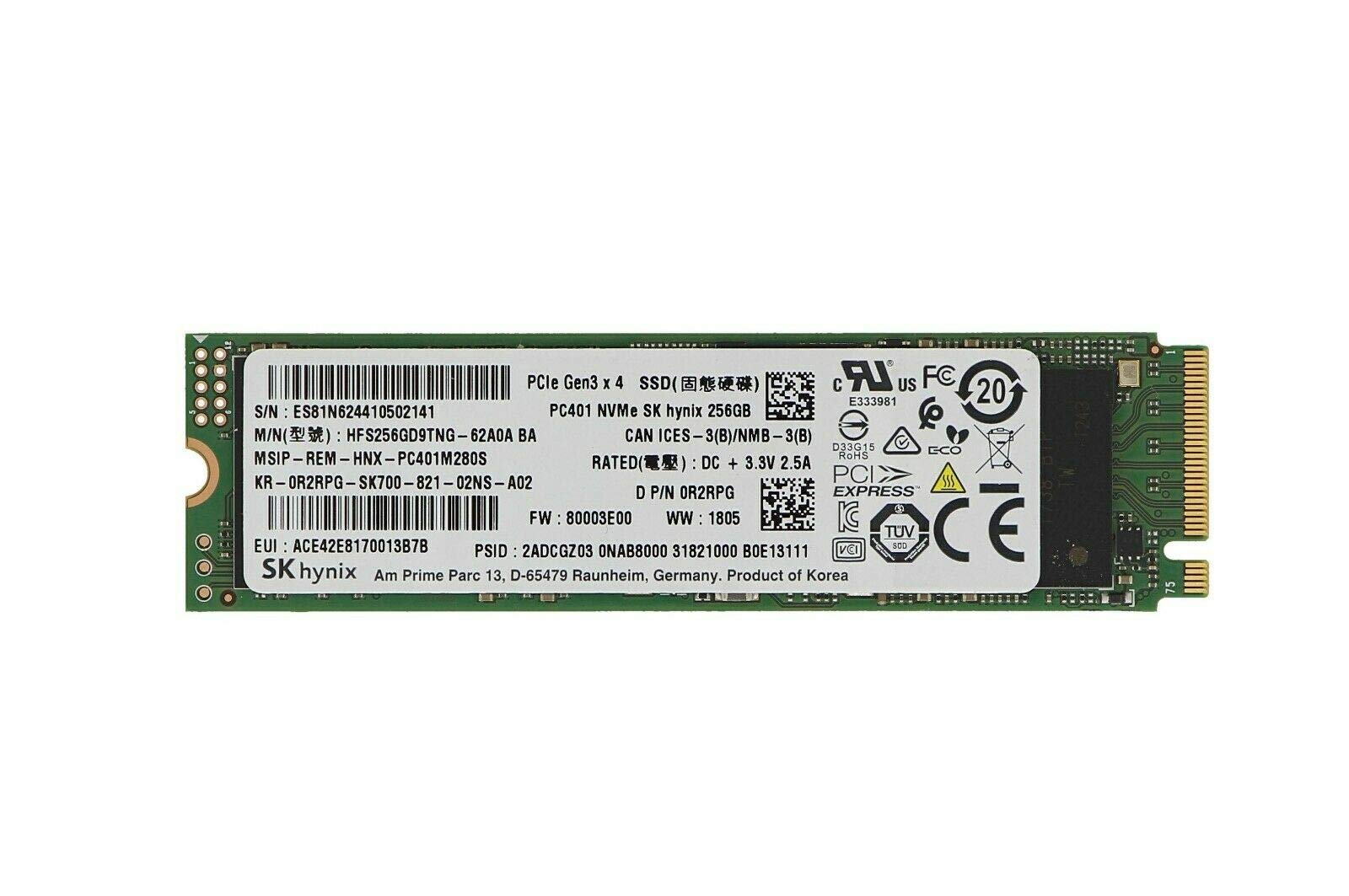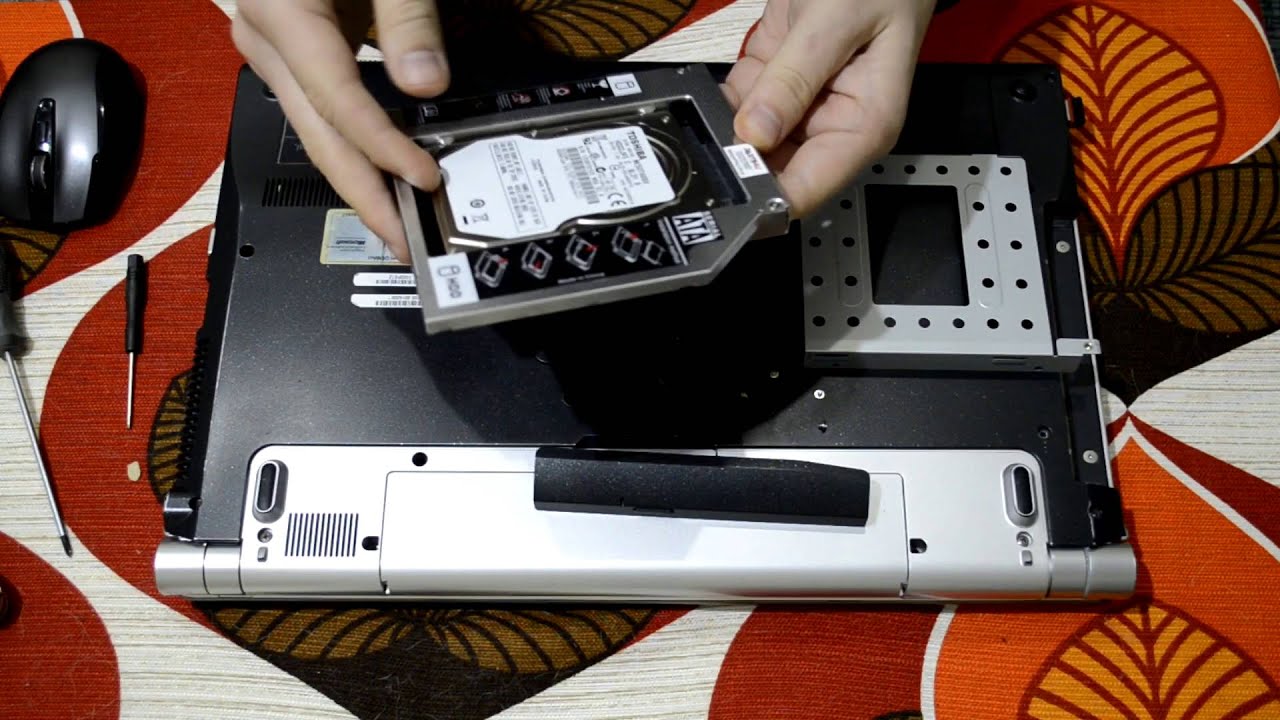Introduction
Welcome to the world of solid state drives (SSDs), the cutting-edge technology revolutionizing the storage industry. In this digital age, where data is the cornerstone of our lives, having high-performance and reliable storage solutions is essential.
But what exactly is a solid state drive? How does it work? And what advantages does it offer over traditional hard disk drives (HDDs)? In this article, we will answer these questions and explore the various aspects of SSDs to help you understand why they have become the go-to choice for many users.
A solid state drive, commonly referred to as an SSD, is a storage device that uses flash memory to store data. Unlike HDDs, which use spinning disks and moving read/write heads to access data, SSDs have no mechanical components. Instead, they rely on integrated circuits to store and retrieve data, resulting in faster and more efficient performance.
The rise of SSDs can be attributed to their ability to deliver dramatically improved speed and reliability. With no moving parts, SSDs offer near-instantaneous access times and fast data transfer rates, leading to smoother and more responsive computing experiences. This makes them particularly valuable for tasks that require rapid access to large amounts of data, such as gaming, graphic design, video editing, and enterprise-level computing.
Furthermore, SSDs are known for their durability and resistance to physical shock. Since they lack fragile moving components, they are more resistant to damage caused by accidental drops or vibrations. This makes them a preferred choice for portable devices like laptops, where durability and data security are crucial.
In addition to speed and durability, SSDs also use less power compared to HDDs. This reduced power consumption translates to longer battery life for laptops and lower electricity bills for desktop computers. The energy efficiency of SSDs makes them an environmentally friendly choice, aligning with the trend towards sustainable technology.
In the following sections, we will delve deeper into how SSDs work, explore the advantages and disadvantages of using them, discuss the different types available, compare them to HDDs, and provide insights on their common applications. So, let’s embark on this journey to uncover the world of solid state drives!
Definition of a Solid State Drive (SSD)
A solid state drive, commonly referred to as an SSD, is a storage device that uses flash memory to store data. Unlike traditional hard disk drives (HDDs), which rely on spinning disks and moving read/write heads, SSDs have no mechanical parts. Instead, they utilize integrated circuits to store and retrieve data, resulting in faster and more reliable performance.
SSDs are designed to mimic the functionality of HDDs but with significant improvements. They are composed of memory chips that store data electronically, enabling quick access and retrieval of information. Rather than relying on physical movement, SSDs use a controller to manage data flow and determine which memory cells to read from or write to.
The flash memory used in SSDs is a type of non-volatile memory, meaning it retains stored data even without power. This characteristic ensures that data remains intact even during power outages or system shutdowns. It also allows for greater data resilience, as SSDs are less susceptible to data loss due to physical damage or mechanical failures.
SSDs come in various form factors, including 2.5-inch drives for desktops and laptops, M.2 drives for ultra-portable devices, and PCIe (Peripheral Component Interconnect Express) drives for high-performance applications. They also come in different capacities, ranging from a few hundred gigabytes (GB) to several terabytes (TB).
In terms of interface, SSDs commonly use SATA (Serial ATA) or NVMe (Non-Volatile Memory Express). SATA SSDs have been widely used and offer good performance, while NVMe SSDs provide even faster speeds and lower latency, making them ideal for demanding tasks such as gaming, content creation, and data-intensive applications.
Overall, the key defining features of solid state drives are their use of non-mechanical components, reliance on flash memory, and the absence of physical movement. These factors contribute to their exceptional speed, durability, and efficiency, making them an increasingly popular choice for individuals and businesses seeking top-notch storage solutions.
How Does an SSD Work?
To understand how a solid state drive (SSD) works, let’s delve into the key components and mechanisms that make it function.
At the core of an SSD are memory cells, which are organized into pages and blocks. Each memory cell is capable of storing a certain amount of data, typically represented by a binary 0 or 1. These cells are made up of floating-gate transistors, which retain their charges to store data even when the power is turned off.
When data is written to an SSD, it is stored in the memory cells as electrical charges. To write data, the SSD controller sends electrical signals to the specific memory cells, which causes the transistors’ floating gates to trap or release electrons. The presence or absence of electrons determines the stored data.
When reading data from an SSD, the controller sends signals to access specific memory cells and measures the voltage levels to determine the stored information. This process is significantly faster than the mechanical read/write operations of traditional hard disk drives (HDDs), leading to decreased access times and improved performance.
SSDs also employ wear-leveling algorithms to ensure that data is distributed evenly across the memory cells. This prevents certain cells from being overused and extends the lifespan of the drive. When a memory block reaches its maximum limit of write cycles, the SSD controller redistributes the data to other blocks, effectively minimizing wear and tear.
To interface with the computer system, SSDs utilize different protocols such as SATA (Serial ATA) and NVMe (Non-Volatile Memory Express). SATA SSDs connect through the standard SATA interface, while NVMe SSDs use the PCIe (Peripheral Component Interconnect Express) interface, enabling faster data transfer rates and reducing latency.
Overall, the main advantages of SSDs stem from their lack of moving parts. Since there are no spinning disks or read/write heads to physically locate data, SSDs offer near-instantaneous access times and improved reliability. This translates into faster boot times, quicker application launches, and seamless multitasking capabilities, enhancing overall system performance.
As technology continues to advance, SSDs are evolving to deliver even greater speeds and capacities. The integration of 3D NAND flash memory, which stacks memory layers vertically, allows for higher storage densities and increased performance. With ongoing advancements, SSDs are expected to become even more prevalent and indispensable in the world of storage technology.
Advantages of Using an SSD
Solid state drives (SSDs) offer numerous advantages over traditional hard disk drives (HDDs), making them an increasingly popular choice for both personal and professional use. Let’s explore the key benefits of using an SSD.
1. Speed: One of the most significant advantages of an SSD is its exceptional speed. Compared to HDDs, which rely on mechanical parts to read and write data, SSDs use flash memory chips to quickly access stored information. This results in significantly faster boot times, quicker application launches, and shorter file transfer durations.
2. Performance: The speed of SSDs directly translates into improved overall system performance. With faster access times, tasks such as opening and saving files, launching software, and running multiple applications simultaneously become smoother and more responsive. This is especially beneficial for gaming, graphic design, video editing, and other resource-intensive activities.
3. Reliability: SSDs have no moving parts, which makes them more reliable than HDDs. Traditional drives are prone to mechanical failures, such as head crashes and disk motor failures, leading to data loss. In contrast, SSDs are more resistant to physical damage and can better withstand drops, shocks, and vibrations. With their solid-state construction, they offer greater durability and data protection.
4. Energy Efficiency: SSDs are known for their energy efficiency. Compared to HDDs, they consume less power during operation, which translates into longer battery life for laptops and lower energy costs for desktop computers. This energy efficiency not only benefits the user but also contributes to reducing environmental impact by conserving power.
5. Silent Operation: Due to their lack of moving parts, SSDs operate silently. In contrast, HDDs generate noise from the spinning disks and read/write heads. The absence of mechanical noise in SSDs enhances the user experience, especially in quiet environments or for those who prefer a noise-free workspace.
6. Compact Design: SSDs are compact and lightweight, making them perfect for portable devices like laptops and tablets. Their smaller form factor allows for sleeker and more lightweight designs, enabling ultra-portability without compromising storage capacity or performance.
7. Scalability: SSDs come in a range of capacities, from a few hundred gigabytes (GB) to multiple terabytes (TB). This scalability allows users to choose the storage capacity that best suits their needs, whether it be for the average user’s personal files or enterprises dealing with massive amounts of data.
With these advantages, it is no surprise that SSDs have become increasingly popular in the market. While they may have been more expensive than HDDs in the past, the cost per gigabyte has significantly decreased, making SSDs more accessible for the average consumer today.
Disadvantages of Using an SSD
While solid state drives (SSDs) offer numerous advantages over traditional hard disk drives (HDDs), they do come with a few drawbacks that are important to consider. Let’s explore the potential disadvantages of using an SSD.
1. Cost: SSDs are generally more expensive than HDDs when comparing storage capacities. Although the price per gigabyte has been decreasing over time, SSDs still tend to be pricier, especially for larger capacities. This cost factor may be a concern for users requiring extensive storage space on a tight budget.
2. Limited Lifespan: Each SSD has a finite number of write cycles before the memory cells begin to degrade. While modern SSDs have improved longevity due to advanced wear-leveling algorithms, it’s important to consider potential lifespan limitations. The lifespan of an SSD depends on various factors such as usage patterns, write-heavy workloads, and the particular SSD model, so it’s essential to choose a reputable brand and properly manage the drive to maximize its lifespan.
3. Storage Capacity: Although SSD capacities have been increasing, they still generally offer lower storage capacities compared to HDDs at similar price points. While this may not be a significant issue for average users, those who require extensive storage for large files, media libraries, or data-intensive applications may find the storage limitations of SSDs restrictive. However, with the availability of cost-effective external storage solutions, such as external hard drives or cloud storage, this limitation can be mitigated.
4. Write Speed Degradation: Over time, the write speed of an SSD can gradually decrease. This is due to the nature of flash memory, which requires erasing data before writing new information. The more an SSD is used and filled with data, the longer it takes to locate empty memory blocks for write operations. However, modern SSDs offset this issue to some extent through advanced firmware and innovative technologies, mitigating the impact on daily usage for most users.
5. Data Recovery Challenges: While SSDs are generally reliable, data recovery from a failed or damaged SSD can be more challenging compared to HDDs. The lack of mechanical components in SSDs means that traditional data recovery methods may not be effective. In some cases, specialized techniques and services may be required, which can be costly and time-consuming.
6. Compatibility: SSDs use different interface standards such as SATA and NVMe. While most modern computers support these interfaces, it’s essential to check the compatibility of an SSD with your system before purchasing. Older systems may require additional hardware or firmware updates to work with certain SSD models.
7. Vulnerability to Power Interruptions: In rare cases, power interruptions during data writing can cause data corruption or even complete data loss on an SSD. To mitigate this risk, it is advisable to use uninterrupted power supply (UPS) systems to provide a stable power source for your computer and SSD.
Despite these disadvantages, SSDs continue to gain popularity due to their numerous advantages. Considering your specific needs, requirements, and budget will help you make an informed decision about whether an SSD is the right choice for you.
Types of SSDs
The evolution of solid state drives (SSDs) has led to the development of various types and form factors, each catering to different needs and applications. Let’s explore the different types of SSDs available in the market today.
1. 2.5-inch SATA SSDs: This is the most common type of SSD, designed to fit into the standard 2.5-inch drive bay commonly found in laptops and desktop computers. These SSDs use the Serial ATA (SATA) interface and are compatible with most systems. With capacities ranging from modest sizes to multiple terabytes (TB), 2.5-inch SATA SSDs offer a good balance between performance, capacity, and affordability.
2. M.2 SSDs: M.2 SSDs are smaller and more compact than 2.5-inch SATA SSDs. They connect directly to the motherboard using the M.2 slot, eliminating the need for cables. M.2 SSDs are available in different lengths and support various interfaces, including SATA, PCIe (NVMe), and even the newer PCIe 4.0 interfaces. M.2 SSDs are commonly used in ultra-thin laptops, mini-PCs, and compact desktop systems.
3. PCIe SSDs: These SSDs connect to the motherboard’s PCIe slots, offering even faster data transfer rates compared to SATA or M.2 SSDs. PCIe SSDs utilize the Non-Volatile Memory Express (NVMe) protocol, which takes advantage of the high bandwidth and low latency of the PCIe interface. This type of SSD is ideal for demanding applications that require lightning-fast data access, such as high-performance gaming, content creation, and professional workstations.
4. External SSDs: External SSDs are portable storage devices that connect to the computer via USB or Thunderbolt interfaces. They provide the advantage of flexibility and portability, allowing users to easily transfer and access data between different devices. External SSDs come in various form factors, including small pocket-sized drives or larger desktop-style enclosures, offering different capacity options depending on the user’s needs.
5. Enterprise SSDs: Enterprise-grade SSDs are designed for high-end server and data center applications. These SSDs are built to handle intense workloads, providing exceptional reliability, durability, and performance. They often incorporate advanced features like power loss protection, enhanced error correction, and high endurance to meet the specific demands of enterprise environments. Enterprise SSDs are typically more expensive than consumer-grade SSDs due to their specialized design and advanced technologies.
It’s worth noting that within each type of SSD, there are various brands and models available, each with its own features, performance levels, and price points. When choosing an SSD, it’s essential to consider factors such as storage capacity, performance requirements, compatibility with your system, and budget.
Having a clear understanding of the different types of SSDs allows individuals and businesses to make informed decisions and select the SSD that best suits their specific needs, whether it’s for personal use, gaming, portable storage, or enterprise-level applications.
SSD vs. Hard Disk Drive (HDD)
When it comes to choosing storage solutions, the two main options are solid state drives (SSDs) and hard disk drives (HDDs). Both have their own advantages and disadvantages, so let’s compare SSDs and HDDs across various aspects to help you make an informed decision.
1. Speed: SSDs have a significant advantage over HDDs when it comes to speed. Since SSDs use flash memory chips for data storage, they offer faster read and write speeds, resulting in lightning-fast performance. HDDs, on the other hand, rely on spinning disks and moving read/write heads, which can lead to slower data access and transfer times.
2. Reliability: SSDs are generally more reliable than HDDs. Without any moving parts, SSDs are less susceptible to physical damage caused by drops or vibrations. Furthermore, the absence of mechanical components in SSDs reduces the risk of mechanical failures, such as head crashes or disk motor malfunctions, which can result in data loss. HDDs, with their spinning disks and delicate read/write heads, are more vulnerable to mechanical failures.
3. Durability: SSDs are built to be more durable than HDDs. Since they have no moving parts, they can better withstand physical impacts and shocks, making them ideal for portable devices like laptops. HDDs, with their delicate mechanical components, are more prone to damage when subjected to physical stress or sudden movements.
4. Noise: HDDs generate noise due to the spinning disks and moving read/write heads, which can be noticeable in quiet environments. On the other hand, SSDs operate silently since they have no moving parts, providing a noise-free computing experience.
5. Storage Capacity: HDDs currently offer larger storage capacities compared to SSDs at similar price points. HDDs are available in terabytes of storage, making them the go-to option for bulk storage needs. While SSDs have been increasing in capacity and becoming more affordable, they still commonly offer smaller storage sizes relative to HDDs.
6. Power Consumption: SSDs are more energy-efficient compared to HDDs. SSDs require less power to operate, leading to longer battery life for laptops and reduced energy consumption for desktop systems. This energy efficiency is not only advantageous in terms of portability but also contributes to lower electricity bills and reduced environmental impact.
7. Cost: HDDs are generally more cost-effective when it comes to storage capacity. They offer higher capacities at lower price points compared to SSDs. However, when considering the overall performance and advantages of SSDs, the cost per gigabyte has been decreasing over time, making SSDs increasingly competitive in terms of price.
8. Application Performance: Due to their faster read and write speeds, SSDs provide superior performance in applications that require quick data access, such as gaming, multimedia editing, and booting up operating systems. HDDs, while still capable of providing satisfactory performance for regular computing tasks, may struggle with demanding applications that require rapid data transfer and processing.
In summary, SSDs offer significant benefits in terms of speed, reliability, durability, and energy efficiency. While HDDs still dominate in terms of storage capacity and cost-effectiveness, the advantages of SSDs make them an attractive choice for users seeking improved performance and reliability in their storage solutions.
Common Applications of SSDs
Solid state drives (SSDs) have become increasingly popular due to their exceptional speed, reliability, and performance. They offer significant advantages over traditional hard disk drives (HDDs), making them a preferred choice for a wide range of applications. Let’s explore some of the common applications where SSDs excel.
1. Personal Computers: SSDs have transformed the computing experience for personal computers. With faster boot times, quicker application launches, and improved overall system performance, SSDs enhance everyday computing tasks such as web browsing, document editing, and multimedia playback. They provide noticeably smoother and more responsive performance, ensuring a seamless user experience.
2. Gaming: SSDs have revolutionized the gaming industry. With their lightning-fast read and write speeds, SSDs significantly reduce game load times, allowing gamers to jump into their favorite games quickly. SSDs also improve in-game performance, enabling faster rendering of textures and reducing lag during gameplay. This translates into a more immersive and enjoyable gaming experience.
3. Creative Design and Multimedia: Professionals working in graphic design, video editing, and multimedia production can greatly benefit from the speed and performance of SSDs. The enhanced read and write speeds allow for faster access to large project files, smoother rendering of high-resolution videos, and quicker response times in complex editing tasks. The improved workflow efficiency results in higher productivity and shorter project turnaround times.
4. Enterprise Applications: SSDs are widely used in enterprise applications that require rapid data access and processing. From high-performance database servers to virtualized environments, SSDs deliver faster data retrieval and improved data throughput. Enterprises leverage SSDs to enhance the responsiveness of applications, reduce latency, and optimize the performance of critical systems and databases.
5. Portable Devices: SSDs are commonly used in portable devices such as laptops, ultrabooks, and tablets. Their compact size, lightweight design, and resistance to physical shock make them ideal for use in portable devices that are subject to movement and everyday handling. The improved durability of SSDs helps protect data during travel, ensuring that important files and applications remain intact even in challenging environments.
6. Cloud Infrastructure: With the increasing demand for cloud computing services, SSDs have become a crucial component in data centers. SSDs enable faster data access and quicker response times, resulting in improved performance of cloud-based applications and services. They are essential for handling the high-volume and low-latency requirements of cloud infrastructure, allowing businesses to deliver optimal user experiences to their customers.
7. Embedded Systems and IoT: SSDs are also utilized in embedded systems and Internet of Things (IoT) devices. These devices often require storage solutions that can handle frequent read and write operations, and SSDs are well-suited for such applications due to their speed and reliability. From security cameras and smart home devices to industrial automation systems, SSDs play a crucial role in enhancing the performance and reliability of these embedded systems.
These are just a few examples of how SSDs are transforming various industries and applications. The unmatched speed, reliability, and performance of SSDs make them an indispensable tool for individuals and businesses seeking optimal storage solutions to meet the demands of modern computing.
Factors to Consider When Choosing an SSD
When selecting a solid-state drive (SSD) for your computer or storage needs, there are several key factors to consider. These factors will ensure that you choose the right SSD that aligns with your requirements and maximizes its benefits. Let’s explore the important factors to consider when choosing an SSD.
1. Storage Capacity: Determine your storage capacity needs based on the amount of data you regularly handle and plan to store on the SSD. Consider not only your current requirements but also future growth and storage expansion needs.
2. Performance: Look for SSDs that offer high read and write speeds to benefit from improved system performance. Consider factors such as the type of NAND flash memory used, the SSD controller, and the interface (SATA or NVMe) to ensure optimal performance for your specific use cases.
3. Endurance and Lifespan: Consider the endurance rating of the SSD, which indicates its ability to handle a certain amount of data write operations over its lifetime. SSDs with higher endurance ratings typically offer longer lifespans and are more suitable for write-intensive workloads.
4. Reliability and Durability: Look for SSDs from reputable brands known for their reliability and durability. Consider features such as power loss protection, error correction technologies, and shock resistance to ensure data integrity and longevity.
5. Form Factor and Compatibility: Ensure that the SSD’s form factor (2.5-inch, M.2, or PCIe) and interface (SATA or NVMe) are compatible with your computer or device. Check the specifications of your system to see which form factor and interface it supports.
6. Price and Value: Compare the prices of different SSDs while considering the storage capacity, performance, and features they offer. Balance your budget with the value you expect to derive from the SSD in terms of speed, reliability, and other factors prioritized for your specific needs.
7. Warranty and Support: Consider the warranty period offered by the SSD manufacturer, as well as their reputation for customer support. A longer warranty period provides peace of mind and reflects the manufacturer’s confidence in the SSD’s reliability.
8. Reviews and Feedback: Read customer reviews and seek feedback from reliable sources to gain insight into the real-world performance, reliability, and compatibility of the SSD models you are considering. Learning from others’ experiences can help you make an informed decision.
9. Power Consumption: If you prioritize energy efficiency or you are using the SSD in a portable device, consider the power consumption of the SSD. Look for SSDs with low power consumption to maximize battery life and reduce energy costs.
10. Data Encryption and Security: Depending on your needs, consider SSDs that offer built-in encryption features to protect your sensitive data. Some SSDs support hardware-based encryption, ensuring that your data remains secure even if the drive is lost or stolen.
By considering these factors, you can find an SSD that meets your specific needs, whether you require high performance for demanding tasks, vast storage capacity, or a balance between performance and affordability for everyday use. Remember to prioritize the factors that matter most to you to make an informed decision that aligns with your requirements and budget.
Maintenance and Care for SSDs
Solid state drives (SSDs) are reliable and durable storage devices, but like any technology, they require proper maintenance and care to ensure optimal performance and longevity. By following a few simple practices, you can maximize the lifespan and efficiency of your SSD. Let’s explore the maintenance and care tips for SSDs.
1. Regular Firmware Updates: Check for firmware updates provided by the SSD manufacturer and install them as recommended. Firmware updates often include performance optimizations, bug fixes, and security enhancements that can improve the overall functionality of your SSD.
2. Enable TRIM: Ensure that the TRIM command is enabled on your SSD. TRIM helps maintain optimum performance by informing the SSD which blocks of data are no longer in use and can be marked for deletion. Most operating systems enable TRIM by default for SSDs, but it’s a good practice to verify its status and enable it if necessary.
3. Avoid Overfilling: Leave some free space on your SSD to maintain its performance. Overfilling an SSD can lead to decreased performance and reduced lifespan. Ideally, it is recommended to keep at least 10-20% of the SSD capacity free to allow for effective wear-leveling and garbage collection algorithms to work efficiently.
4. Backup Data: Regularly back up your important data stored on the SSD. Although SSDs are reliable, unexpected failures or data loss can occur. By maintaining regular backups, you can protect your valuable data and restore it in the event of an unforeseen issue.
5. Avoid Excessive Heat: SSDs can generate heat during operation, which can affect their performance and longevity. Ensure proper airflow and ventilation in your computer system to prevent overheating. Avoid subjecting the SSD to extreme temperatures or direct exposure to sunlight, as prolonged exposure to high temperatures can adversely affect the drive’s performance and lifespan.
6. Handle with Care: When handling or installing an SSD, follow proper anti-static precautions and avoid physical shock or impact. SSDs are sensitive electronic devices, and mishandling can cause damage to the delicate components, leading to data loss or decreased reliability.
7. Use Secure Erase when Needed: If you plan to sell or dispose of your SSD, securely erase all data to protect your privacy. SSDs often include the Secure Erase feature, which ensures that all data is permanently erased and cannot be recovered. Follow the manufacturer’s instructions to perform a secure erase to protect your sensitive information.
8. Stay Updated on Best Practices: Keep yourself informed about the latest best practices and recommendations for SSD maintenance. SSD technology is continually evolving, and staying updated on best practices can help you optimize the performance and lifespan of your SSD.
By following these maintenance and care tips, you can prolong the life of your SSD and maintain its optimal performance. A well-maintained SSD ensures fast and reliable storage for your data, enabling you to fully enjoy the benefits of this advanced storage technology.
Conclusion
Solid state drives (SSDs) have rapidly gained popularity in the storage industry, revolutionizing the way we store and access data. With their exceptional speed, reliability, and performance, SSDs have become the preferred choice for individuals and businesses alike.
In this article, we explored the definition and workings of SSDs, highlighting their advantages over traditional hard disk drives (HDDs). We discussed how SSDs offer faster access times, improved system performance, enhanced durability, and energy efficiency. We also compared the different types of SSDs available, such as 2.5-inch SATA, M.2, PCIe, external, and enterprise-grade SSDs, each catering to specific use cases and requirements.
Additionally, we examined the common applications where SSDs excel, such as personal computers, gaming, creative design and multimedia, enterprise applications, portable devices, cloud infrastructure, and embedded systems. These applications benefit from the speed and reliability of SSDs, delivering enhanced user experiences, improved productivity, and optimized data processing capabilities.
When choosing an SSD, we discussed important factors to consider, including storage capacity, performance, endurance, reliability, compatibility, price, warranty, and customer support. By considering these factors, individuals can select the ideal SSD that aligns with their needs and budget.
We also highlighted the significance of maintenance and care for SSDs, emphasizing regular firmware updates, enabling TRIM, avoiding overfilling, data backups, heat management, proper handling, secure erasing when needed, and staying updated on best practices. These practices ensure optimal performance, longevity, and data integrity for SSDs.
In conclusion, SSDs have transformed the storage landscape, offering unparalleled speed, reliability, and performance. As technology evolves, SSDs continue to advance, providing even greater capacities and faster speeds. Whether for personal use, gaming, professional applications, or enterprise-level storage infrastructure, SSDs offer the benefits of faster data access, smoother multitasking, and improved productivity. By understanding the features, advantages, and considerations associated with SSDs, you can make informed decisions and harness the full potential of these remarkable storage devices.







